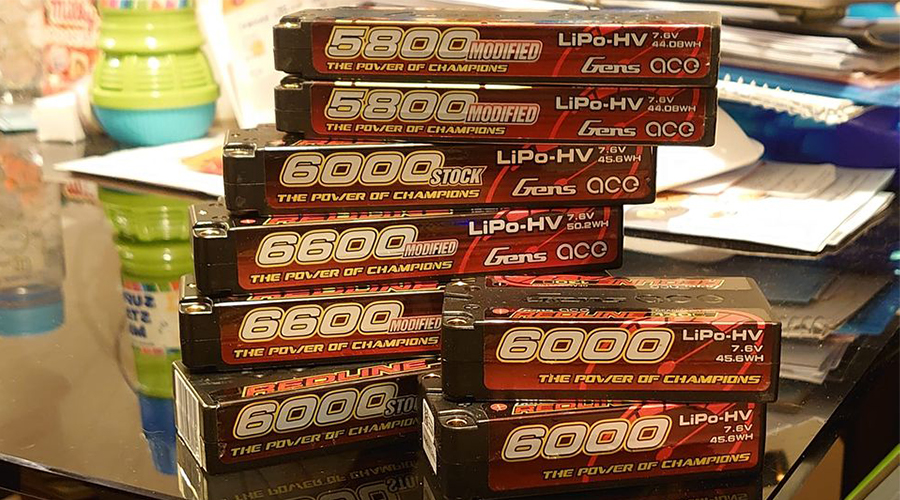In RC lingo, the higher the “C” rating, the greater the burst of power you’re going to get from your LiPo. In plain English: The bigger the C number, the more juice your battery can pump out in a short time!
What 20C, 25C, 30C, or 50C mean?
Imagine we’ve got a battery with a capacity of 1000mAh:
20C: It’s going to safely discharge at 20 times its capacity. That’s 1000mAh x 20, which equals a whopping 20A. This battery can kick out a max current of 20A! Using the same logic, here’s what you get with the other ratings:
25C: 25 x 1000mAh = 25A
30C: 30 x 1000mAh = 30A
50C: 50 x 1000mAh = 50A
But hey, throttle back a bit! Continuously hitting those high C ratings can cause your battery to heat up, potentially shortening its lifespan.
This is critical for those adrenaline-pumping, high-performance RC applications like those blazing-fast RC cars or high-torque drones that need power in a heartbeat. Typically, the discharge rate you see marked on an RC LiPo battery refers to its “burst” discharge rate. This means the maximum speed at which it can discharge safely, and usually, it’s higher than the constant discharge rate.
Take a battery marked with “50C” for instance. This bad boy can hit a discharge rate of 50C in a short burst. And if you’re lucky, some generous LiPo manufacturers might even give you both the constant and burst discharge rates, so you know exactly what you’re working with.
Let’s dive a little deeper and unlock the mystery behind the “C” rating, its definition, and mechanics, and just how it turns your RC car or drone into a power-packed beast.
What’s this ‘C’ anyway?
In our RC world, when we talk about a LiPo battery, the “C” stands for its discharge rate. It tells you how fast the battery can safely let out its power. To get technical, it’s the product of the battery’s capacity and the current, indicating the maximum current a battery can output in a short span.
To get a clearer picture, let’s break down this “C”. Simply put, a 1C discharge rate means the battery will discharge its rated capacity in an hour. So, a 1000mAh battery going at 1C is going to discharge 1000mA, or 1A, in an hour.
Effects of “C” on batteries
Size and Weight
High-discharge rate batteries have to pack some muscle! They might need thicker or larger electrodes and superior cooling designs. This means the battery might be a bit bulkier or heavier. However, when you line it up against other factors like capacity, the effect of the discharge rate on size and weight isn’t huge. But, hey, sometimes bigger means more power, right?
Internal Resistance
Now, batteries with high discharge rates often come with a lower internal resistance. Why’s that cool? Lower resistance lets more current zip through without generating too much heat. It’s like having a super-charged highway for electrons!
Capacity
On paper, discharge rate and capacity aren’t directly linked. But in the real world, to juice up that discharge rate, manufacturers might have to compromise a bit on capacity. So, you could find that a 25C battery of the same size might have a lower capacity than its 20C sibling. It’s a trade-off; think of it as choosing between a sprinter and a marathon runner.
Operating Temperature
Pushing the pedal with high discharge rates? Expect your battery to heat up faster, especially when you’re maxing out on current. But fear not! A well-designed high-discharge battery can handle that extra heat, ensuring it operates safely.
Charging Time
The discharge rate itself doesn’t tell you how fast you can juice up the battery. But, a lot of high “C” rated batteries also boast quicker charge times. It’s not a hard and fast rule, but generally, if a battery can dish out power at high speeds, it’s ready to take it in fast too.
But a word of caution, folks! The above are general observations. Each battery model is a unique beast. Always turn to the manufacturer’s specs to get the real scoop on performance and features. Different manufacturers and technologies can bring slight twists to these general relationships.



Leave a Reply